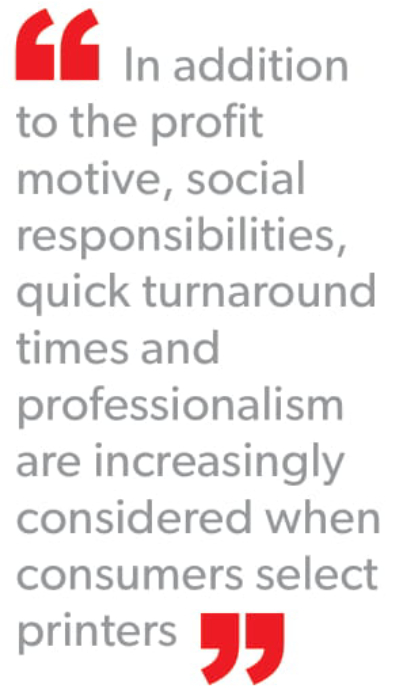

A: We offer a host of services for household and commercial use, ranging from printing sophisticated business and lifestyle magazines, to annual reports, coffee-table books and company profiles. Additionally, we undertake the printing of labels and packaging for commercial purposes.
Softwave is able to fulfil consu mers’ printing needs through offset and digital printing services.
In terms of quality, we use highgrade imported raw materials such as paper, plates, ink and toner – and Softwave has established a brand name that is synonymous with reliability and efficiency in the printing industry.
Q: How is technology impacting the printing industry?A: The trend of switching to digital printing has had a major impact on conventional printing. Softwave foresaw the global paradigm shift to digital printing amid the gradual popularity of print on demand through which clients are able to customise their printing needs to suit personal preferences, and find solutions faster and more efficiently.
The ability to customise every print by way of features such as variable data printing – coupled with additional colour options, quick turnaround times and flexibility – has propelled digital printing to the forefront of customer preferences.
Moreover, nanotechnology breakthroughs in printing have opened new avenues for competing with offset printing.
In addition, the switch to online marketing poses a growing challenge for printers.
Q: What is your assessment of the level of competition among printers in Sri Lanka?A: The local printing industry is highly competitive with regard to price. Furthermore, industry participants have invested in state-of-the-art technology to improve their production capabilities.

Softwave seeks to differentiate itself by offering high quality products through raster images, accurate colour registration, optimum colour balancing and excellent customer service.

A: The local printing landscape is very competitive; and it is affected by the import of similar printed items and fluctuations in global prices of imported raw materials that are necessary for local printing. Rapid technology advancements with the introduction of digital printing facilities have contributed to a convenient and dynamic market.
Consumer purchasing power has been negatively affected following the 21 April attacks particularly in the low and middle-income categories. This has resulted in clients minimising their expenditure on complimentary items such as calendars and diaries in the face of the economic slowdown.
The government must play a more active role in supporting local printers to develop their businesses. With the establishment of a new regime, more relief in terms of duties on raw materials such as paper, printing plates and ink are anticipated.
Consumers have more complex needs, contributing to an intense business climate. In addition to the profit motive, social responsibilities, quick turnaround times and professionalism are increasingly considered when consumers select printers.
Q: In your view, how can the standard of printing be elevated?A: Streamlining processes and introducing ISO standards, together with quality auditing and quality assurance programmes, will enable the local standard of printing to reach the next level.
Government assistance is integral to developing the print industry by promoting joint ventures with principal manufacturers of raw materials. Moreover, printing companies must seek more established partners in overseas markets and expand their reach.
Q: What are Softwave’s future plans in relation to expansion?A: Our organisation has a well construed business plan to expand by shifting to a new location in the near future. We expect to carry out the entire production process – i.e. from marketing, pre-press and planning, to printing, finishing and delivery – on one floor.
Innovative new products will be introduced in the near future, driven by efficiency and reliability, using state-of-the-art technology based on insights gained from R&D.
Softwave is interested in venturing overseas given that local opportunities are limited and the market is overcrowded. While demand in areas such as packaging is improving, the percentage increase is insufficient to conduct business profitably.